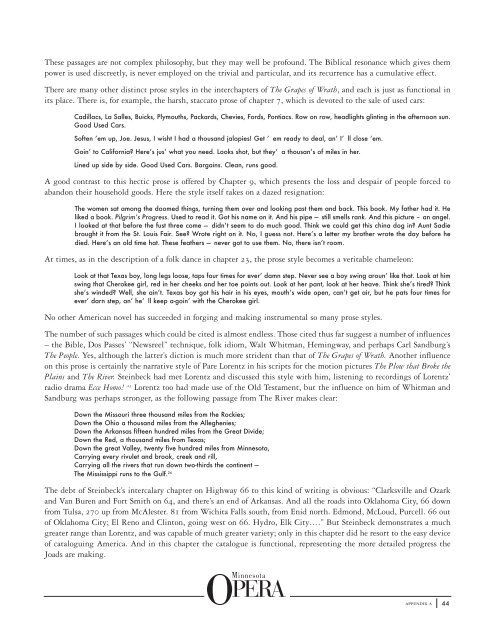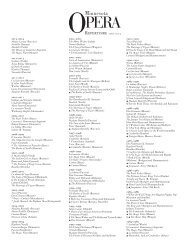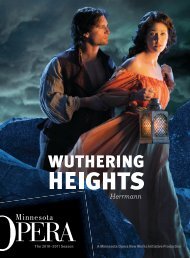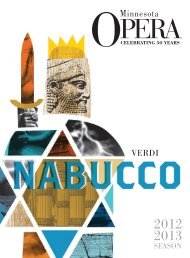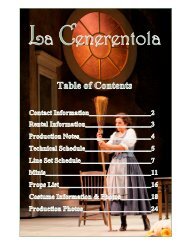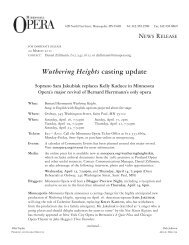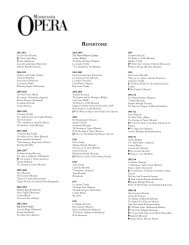Create successful ePaper yourself
Turn your PDF publications into a flip-book with our unique Google optimized e-Paper software.
These passages are not complex philosophy, but they may well be profound. The Biblical resonance which gives them<br />
power is used discreetly, is never employed on the trivial and particular, and its recurrence has a cumulative effect.<br />
There are many other distinct prose styles in the interchapters of The <strong>Grapes</strong> of Wrath, and each is just as functional in<br />
its place. There is, for example, the harsh, staccato prose of chapter 7, which is devoted to the sale of used cars:<br />
Cadillacs, La Salles, Buicks, Plymouths, Packards, Chevies, Fords, Pontiacs. Row on row, headlights glinting in the afternoon sun.<br />
Good Used Cars.<br />
Soften ’em up, Joe. Jesus, I wisht I had a thousand jalopies! Get ‘ em ready to deal, an’ I’ ll close ‘em.<br />
Goin’ to California? Here’s jus’ what you need. Looks shot, but they’ a thousan’s of miles in her.<br />
Lined up side by side. Good Used Cars. Bargains. Clean, runs good.<br />
A good contrast to this hectic prose is offered by Chapter 9, which presents the loss and despair of people forced to<br />
abandon their household goods. Here the style itself takes on a dazed resignation:<br />
The women sat among the doomed things, turning them over and looking past them and back. This book. My father had it. He<br />
liked a book. Pilgrim’s Progress. Used to read it. Got his name on it. And his pipe — still smells rank. And this picture – an angel.<br />
I looked at that before the fust three come — didn’t seem to do much good. Think we could get this china dog in? Aunt Sadie<br />
brought it from the St. Louis Fair. See? Wrote right on it. No, I guess not. Here’s a letter my brother wrote the day before he<br />
died. Here’s an old time hat. These feathers — never got to use them. No, there isn’t room.<br />
At times, as in the description of a folk dance in chapter 23, the prose style becomes a veritable chameleon:<br />
Look at that Texas boy, long legs loose, taps four times for ever’ damn step. Never see a boy swing aroun’ like that. Look at him<br />
swing that Cherokee girl, red in her cheeks and her toe points out. Look at her pant, look at her heave. Think she’s tired? Think<br />
she’s winded? Well, she ain’t. Texas boy got his hair in his eyes, mouth’s wide open, can’t get air, but he pats four times for<br />
ever’ darn step, an’ he’ ll keep a-goin’ with the Cherokee girl.<br />
No other American novel has succeeded in forging and making instrumental so many prose styles.<br />
The number of such passages which could be cited is almost endless. Those cited thus far suggest a number of influences<br />
– the Bible, Dos Passes’ “Newsreel” technique, folk idiom, Walt Whitman, Hemingway, and perhaps Carl Sandburg’s<br />
The People. Yes, although the latter’s diction is much more strident than that of The <strong>Grapes</strong> of Wrath. Another influence<br />
on this prose is certainly the narrative style of Pare Lorentz in his scripts for the motion pictures The Plow that Broke the<br />
Plains and The River. Steinbeck had met Lorentz and discussed this style with him, listening to recordings of Lorentz’<br />
radio drama Ecce Homo! 23 Lorentz too had made use of the Old Testament, but the influence on him of Whitman and<br />
Sandburg was perhaps stronger, as the following passage from The River makes clear:<br />
Down the Missouri three thousand miles from the Rockies;<br />
Down the Ohio a thousand miles from the Alleghenies;<br />
Down the Arkansas fifteen hundred miles from the Great Divide;<br />
Down the Red, a thousand miles from Texas;<br />
Down the great Valley, twenty five hundred miles from <strong>Minnesota</strong>,<br />
Carrying every rivulet and brook, creek and rill,<br />
Carrying all the rivers that run down two-thirds the continent —<br />
The Mississippi runs to the Gulf. 24<br />
The debt of Steinbeck’s intercalary chapter on Highway 66 to this kind of writing is obvious: “Clarksville and Ozark<br />
and Van Buren and Fort Smith on 64, and there’s an end of Arkansas. And all the roads into Oklahoma City, 66 down<br />
from Tulsa, 270 up from McAlester. 81 from Wichita Falls south, from Enid north. Edmond, McLoud, Purcell. 66 out<br />
of Oklahoma City; El Reno and Clinton, going west on 66. Hydro, Elk City….” But Steinbeck demonstrates a much<br />
greater range than Lorentz, and was capable of much greater variety; only in this chapter did he resort to the easy device<br />
of cataloguing America. And in this chapter the catalogue is functional, representing the more detailed progress the<br />
Joads are making.<br />
appendix a<br />
44


